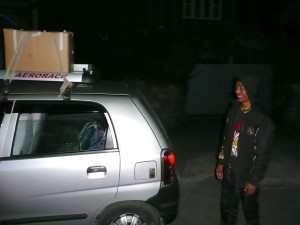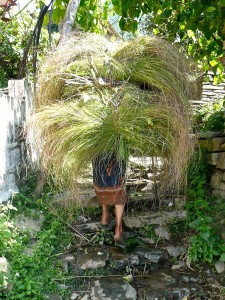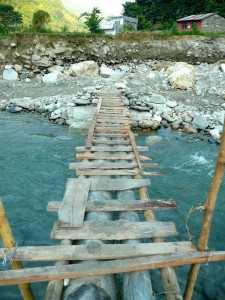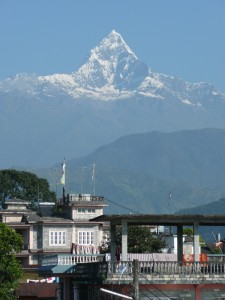Chitra Pun, the Field Project Manager for Himanchal Education Foundation (HEF), and I spent a few days buying supplies in Pokhara, then set off at 5 am one morning for Nangi. The 3-hour bouncing taxi ride from Pokhara to Beni is a nail bitter with washed out roads, potholes the size of elephants and enough dust to choke a rat. Beni is a classic trading town clogged with huge trucks, cheap Chinese goods and dozens of Nepali men looking for day jobs as porters. There is a
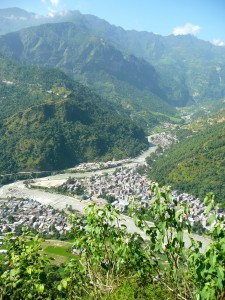
Kali Gandaki river in the foreground as it meets the Myagdi Khola river in Beni. The Kali Gandaki is a holy river as evidenced by the many cremation pyres and burial mounds along the banks. It courses through the deepest gorge in the world just north of this site.
road from Beni to Nangi, but still impassable after the rainy season. I prefer walking and it felt great to start hiking to Nangi…at least for the first 3 hours…the 10 miles isn’t bad…the 5000 feet elevation gain isn’t so friendly.
Along the way we encountered people going up and down the mountains carrying store bought goods and local produce. My favorite sights are the “walking haystacks”. It’s grass-cutting season, when grass is cut, carried in huge baskets and stored for animal feed much like our hay in the USA. All you see are feet walking under mounds of fragrant grass. I’ve tried it…cutting grass with my Nepali friends…the delightful aroma is soon lost to the backbreaking, sweating work of bending over and swinging a small hand-help scythe for hours.
The most astonishing sight was an elderly porter carrying a 19-inch TV set in its box. He had been hired by three women to carry this all the way from Beni to Nangi. He did this using a traditional head strap, called a namlo, which is secured around the box and then worn across the forehead. The extent of his labor was not lost on a single person who watched him trudge a few dozen feet…pause…sigh …and repeat the whole brutal struggle. I shifted my small daypack and decided to stop whimpering for the last two miles.
Next week meet you’ll Chitra Pun. He is a man who rides through life much like water in a stream flows around boulders. He is the person who overseas all the projects and activities of HEF and the village. If Mahabir is the brains then Chitra is the brawn…and sweat…and tears.

